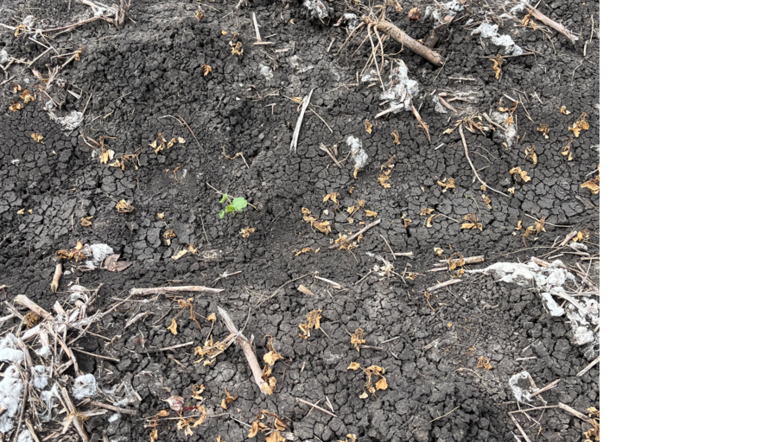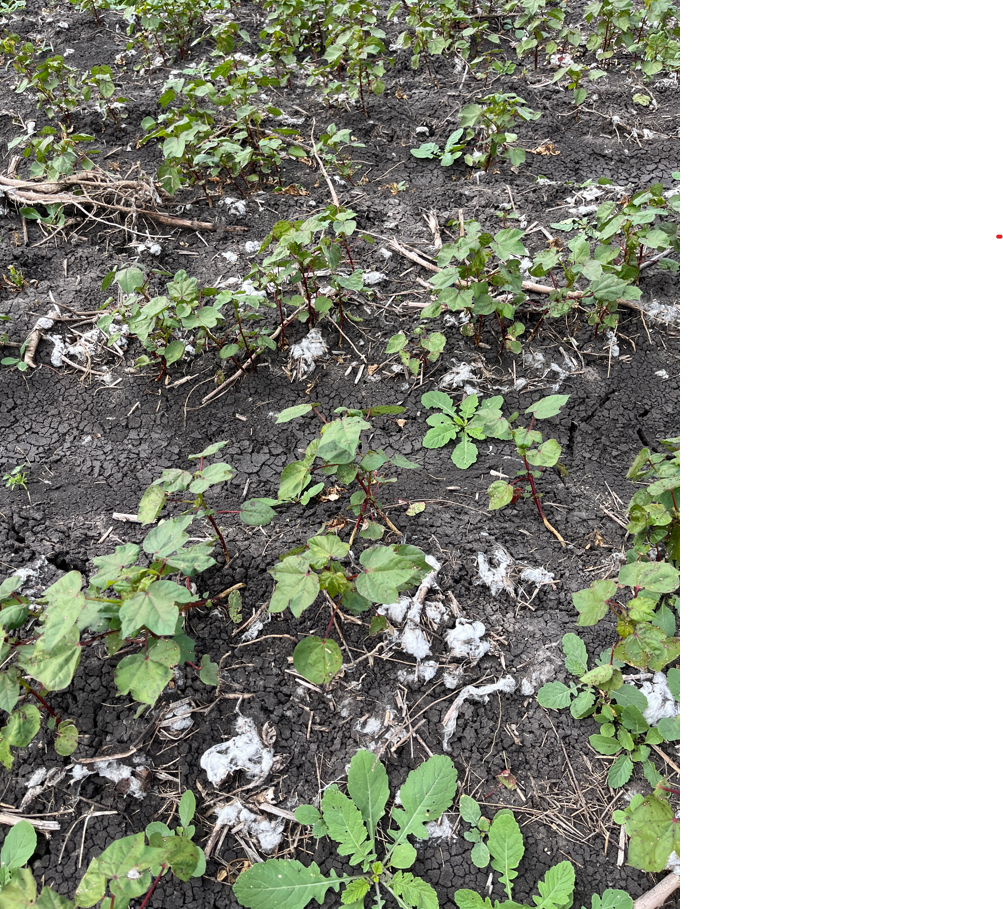
Difficult weeds, volunteer cotton set to be in the eye of Monsoon

Trials with Monsoon herbicide against a range of broadleaf weeds, including this volunteer cotton site on the Darling Downs in Queensland, have clearly demonstrated its effectiveness, in this case applied at 1 litre per hectare in a tank mix with 1.6 litres/ha of Wipe-Out® Pro, as well as Hasten at 1 per cent.
NORTHERN croppers have a lot to think about when applying broadleaf herbicides on winter and summer fallows – of course, their effectiveness on weeds, particularly from some traditional options; plantback intervals; one-pass applications with brews containing grass herbicides and any related antagonism; their volatility and application restrictions in sensitive cropping areas; and, weather conditions after spraying.
Fortunately, the recent registration of a dual mode of action broadleaf herbicide, including for the popular optical spot spraying of winter and summer fallow weeds, is set to simplify the decision-making for growers and they can take advantage of it leading into summer cropping programs this season.
Monsoon®, developed by ADAMA Australia, is a unique co-formulation of two proven active ingredients, bromoxynil (Group 6) and fluroxypyr (Group 4), that has demonstrated excellent control of a wide range of difficult broadleaf weeds, vines and woody weeds.
It also can be combined with a range of compatible tank-mix partners, with minimal impact on the efficacy of grass herbicides and without the volatility concerns or re-cropping limitations of some alternative options.
Market Development Manager with ADAMA Australia in Southern Queensland, Jim O’Connor, said trials with Monsoon in Northern New South Wales and the Darling Downs region in Queensland had shown strong activity on volunteer cotton, fleabane and saltbush, and he expected it would become another important tool in weed control programs with optical spot sprayers.
He said Monsoon would be particularly useful to cotton growers due to its excellent activity on GM cotton volunteers and a range of hard-to-control weeds. Monsoon can be successfully tank mixed with grass control partners such as glyphosate, glufosinate and Group 1 chemistry for robust control of susceptible summer grass weeds at early growth stages.
“There can be some antagonism when using Group 4 chemistry with grass control herbicides, however it is reduced when using fluroxypyr in combination with bromoxynil, especially at lower use rates,” Jim said.
There is also reduced carryover risk associated with these active ingredients, with the re-cropping periods following Monsoon application set at seven days through to 28 days according to application rate and rotation crop type.
“It has a nice rate range with optical spot sprayers up to 4 litres per hectare, so growers can go with a high dose if needed or use a lower rate to further reduce the re-cropping interval,” Jim said.
“Growers will be able to spray in front of upcoming plantings of major summer crops including cotton, sorghum and mung beans.
Pictured is some of the untreated volunteer cotton at the Darling Downs trial site in Queensland.
He said the combination of the two active ingredients also had demonstrated success against saltbush, sowthistle and ipomoea vine species, while bromoxynil (Group 6) chemistry was not often used on northern fallows, which would help maximise herbicide efficacy.
“It presents an opportunity to get a different chemical group involved in fallow programs.”
“Monsoon applications are also robust in a range of suitable meteorological conditions, whereas alternative herbicide efficacy can vary depending upon conditions.”
Jim said growers were having to decide over the use of traditional herbicides, different brews and various products under permit with their fallow weed control applications, so the registration of Monsoon for use with optical spot sprayers was timely.
Monsoon is also registered to be applied in winter cereals, targeting broadleaf weeds in post-emergent applications, and work is under way to add use patterns in sugarcane and sorghum to the product label.
For further information on Monsoon herbicide applications in fallows and winter cereals, growers and advisers can contact their local ADAMA Australia representative or visit ADAMA.com
Media Contact: Andrew Newall | Portfolio and Innovation Manager | Andrew.newall@adama.com | +61 418 224 422
